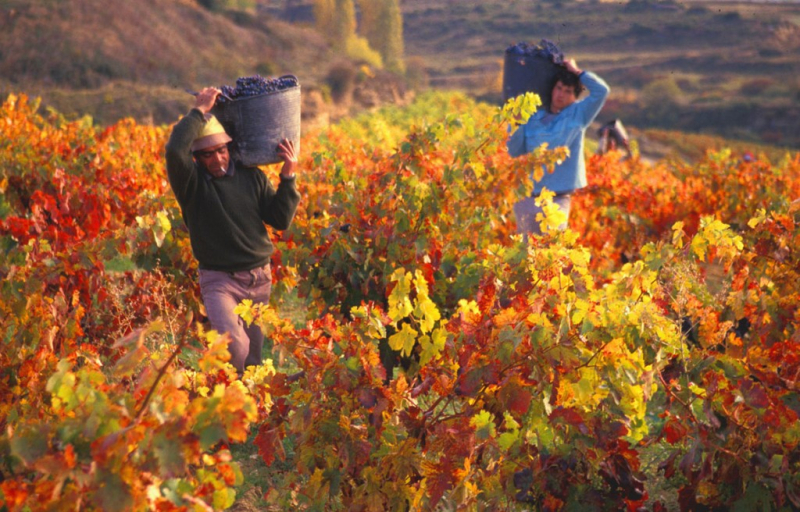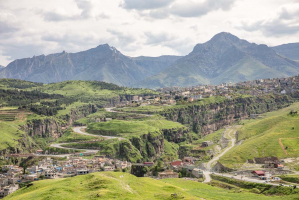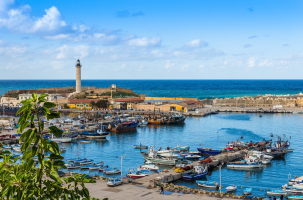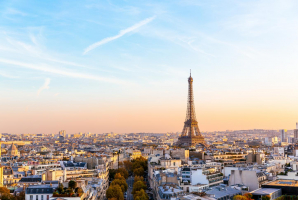Top 12 Things to Know Before Traveling to Argentina
Argentina's endless landscapes and stunningly diverse fauna may be enough to establish the country's reputation. In addition, Argentina is also known for its ... read more...excellent wine, cuisine, music, and dance. If you are planning a trip to this country, don’t forget to read this article. Toplist will bring you the list of the things to know before traveling to Argentina!
-
Argentina is regarded as one of South America's safest countries, with stereotypes such as drug-related violence and kidnappings less prevalent than in other countries on the continent. When visiting cities like Rosario, Córdoba, or Mendoza, however, keep your eyes peeled. These cities have lower petty crime rates than Buenos Aires, but Rosario, for example, has been part of a drug-trafficking route for years, with rising gang violence. Visitors may not be affected, but suspicious situations should be avoided.
You have probably heard about Argentina's inflation and currency instability in the news, but this is not something that tourists are concerned about. Take the same precautions you would anywhere else. Such as, do not take unlicensed taxis or walk around alone at night. Besides, do not draw too much attention to yourself, from flashy jewelry to making yourself a target for crimes of opportunity like pickpocketing. Small towns in rural areas are generally safe and secure, but use caution and never leave your belongings unattended. This is one of the things to know before traveling to Argentina!

Photo: rainforestcruises.com 
Photo: rainforestcruises.com -
Argentina is famous for its vibrant cities, passionate culture, and diverse range of natural wonders. Argentina, the birthplace of the tango, is more than meets the eye. Numerous cafes and streetside hangouts ooze captivating cosmopolitan creativity along the paved European-style streets of bustling Buenos Aires. Those seeking a taste of city life should be aware that Buenos Aires is known for never sleeping. The Porteian city comes alive with museums, restaurants, nightlife, tango, and more. There are Cordoba, which has a variety of Spanish architecture, and Mendoza, which is located in Argentina's wine region.
Wildlife and natural attractions are never far away when visiting Argentina. The impressive Iguaz Falls is located in Argentina's subtropical north, with the surrounding area ideal for hiking. A visit to the Los Glaciares National Park in Patagonia will provide you with the opportunity to see penguins and graceful glaciers. The opportunity to see southern right whales in the Golfo Nuevo is incredible.

Photo: holidayparrots.com 
Photo: rainforestcruises.com -
The Visa is absolutely one of the things to know before traveling to Argentina that Toplist would like to share with you. Argentina is a fantastic South American destination for foodies and history buffs. Travelers should be aware of the visa policies of the countries they intend to visit. You have to make sure your passport is valid for at least six months after your return flight home. If your stay as a tourist is 90 days or less, you may not need a visa, depending on your citizenship. You need to check the requirements and check with the Argentine Consulate or Embassy in your area. The payment of a reciprocity fee for Canadians, Americans, and Australians has been suspended, so there is no fee to pay.
This is definitely an important thing that you should keep in mind before making a trip to this country! Don’t forget to check it carefully!

Photo: visapm.vn 
Photo: visakhoinguyen.com -
You want to visit Argentina, but you do not know when the best time is? Don’t worry, Toplist has the answer for you. It is best to go to this country between September and April, as a general rule (early spring through the beginning of fall). Moreover, the best time to visit Argentina will also be determined by where you choose to travel, as the weather varies by region. However, from spring to fall, the weather is generally pleasant across the country.
You should avoid the months from June to August if you do not like the cold, especially if you are going to Patagonia. If you do not like the heat, avoid Buenos Aires and the central and northeastern regions in the summer. On a "cool" day, you can expect temperatures of 90°F (32°C). Buenos Aires has mild winters, with temperatures hovering around 55°F (13°C). However, as you approach the south and westernmost regions, the weather becomes increasingly chilly.

Photo: tripsavvy.com 
Photo: kimkim.com -
The Argentine peso is Argentina's official currency. Foreign currencies can be exchanged at banks and authorized agencies, even though the US dollar and the Euro are widely accepted. American Express, VISA, Diners, and MasterCard are the most widely accepted credit cards. In Buenos Aires, traveler's checks are easily exchanged, but not in some provincial towns. ATMs accept local currency 24 hours a day, and larger shops and restaurants usually accept credit or debit card payments.
When visiting rural areas, it is highly recommended to arrive with at least a small amount of cash and always have cash on hand. If you run out, simply withdraw money from one of the numerous ATMs located throughout cities and towns. Whatever you do, maintain discretion, avoid flashing your wallet, and do not withdraw large sums of money at once. This is one of the things to know before traveling to Argentina that Toplist strongly believes that you should remember!

Photo: vietnamplus.vn 
Photo: moneytransferexchange.com -
Another thing to know before traveling to Argentina is about traveling around this country. Because of the country's size, flying is the most convenient way to travel long distances throughout the country. Flying and land transportation can be combined. Aerolneas Argentinas, Austral, Andes Lneas Aéreas, LADE, and LATAM Argentina are among the airlines that offer domestic flights. Jorge Newbery Airport, located north of the city of Buenos Aires, serves domestic and international flights.
When it comes to land travel, dozens of buses depart daily from Retiro Bus Station in downtown Buenos Aires for the country's major cities. Long-distance buses have restrooms, air conditioning, and bars onboard, which are the most popular and economical mode of transportation in the country. Buses and seats for various classes are available, particularly on popular intercity routes. In places like Patagonia, Tierra del Fuego, and the northwest, where public transportation is limited or infrequent, renting a car allows you to explore independently and off the beaten path.

Photo: wheretoretirecheaply.com 
Photo: paperpelicans.com -
One of the things to know before traveling to Argentina that Toplist has complied for you is local public transportation. Argentina has a large and cost-effective public transportation system. This is actually good news for everyone who has a plan to visit this country and does not want to pay too much for transportation costs. A SUBE card, which can be purchased at lottery shops, train and subway stations, and kiosks, is the most convenient way to get around most cities. This reloadable card is not valid everywhere, but it does cover major cities and more than 30 smaller towns.
Intercity trains have been neglected for decades because long-distance buses are the primary mode of transportation outside of Buenos Aires. The Ferrocarril, which connects 12 of Argentina's 23 provinces, has recently regained popularity. Trains are a relaxing way to see parts of Argentina that are off the beaten path if you have the time, but be aware that they can be slow, uncomfortable, and may not leave on time.

Photo: worldbank.org 
Photo: becci.dk -
Another piece of information about one of the means of transportation – taxis – will be mentioned as the next thing to know before going to Argentina. Getting a taxi in any Argentinian city and surrounding areas is simple for anyone who wants to take a trip around the place they want to visit. You should always check that your taxi is licensed and belongs to a "Radio Taxi" company, especially at night.
Some taxis will have a sign on the roof with the name of the company they work for. If they do not and you still want to ride, look at the taxi's registration information on the inside. Be aware that taxis in different parts of the country have different colors. They are black and yellow in Buenos Aires, white in Córdoba, and so on. In September 2020, UBER became officially legal in Buenos Aires, allowing you to ride with confidence. Cabify, UBER's competitor, is also available in major cities.

Photo: dreamstime.com 
Photo: pinterest.com -
You should remember to bring sunscreen when packing because the sun in Argentina is extremely strong. Another reminder for you is to not forget to dress in layers. Because the country is so large, many visitors staying for two to three weeks choose to fly around it. So, if you are traveling from Buenos Aires to Patagonia, expect a significant temperature difference.
When approaching the Andes, layering is essential because temperatures drop dramatically from day to night, even in the summer. Rain gear is especially useful when traveling through the central and northern regions, where it can rain buckets all year. November is the wettest month on average across the country. Clothing is also something that you should consider packing. Despite the fact that Argentina is a Catholic country, the majority of women do not dress as conservatively as one might expect. However, dressing too immodestly can draw unwanted attention in the form of comments on the street, so opt for a look that is classy but not trashy.

Photo: travellingwithdiana.com 
Photo: pandotrip.com -
Argentina is in the UTC/GMT-3 time zone, with no time changes throughout the year. Argentina's activities begin early in the morning and last until late at night. Most stores in Argentina are open from 9 am to 8 pm (Monday to Friday), and from 9 am to 1 pm on Saturdays, but many stores along the main avenues and in the main commercial areas are open all afternoon on Saturday. On Sundays and public holidays, shopping malls are usually open until 10 pm. Banks are open Monday through Friday from 10 am to 3 pm. Some branches in the downtown area may remain open until 4 p.m. ATM and cash machine withdrawals are available 24 hours a day.
For those who are concerned about the time people in Argentina go out to eat. Breakfast is served between 7 am and 10 pm, lunch is served between 12 pm and 3 pm, and dinner is served between 8 pm and 11 pm, depending on work and other commitments.

Photo: cntraveler.com 
Photo: tripsavvy.com -
Food specialties are the next thing to know when traveling to Argentina that Toplist would like to introduce to you. A trip to Argentina is the ideal opportunity to indulge in some serious feasting, including sampling some of Argentina's world-famous steak. Do not forget to make a point of trying these traditional dishes.
A trip to Argentina isn't complete without sampling the local cuisine, and Asado is as authentic as it gets. This delectable term refers to both the barbeque method and the event itself. The Asado, or barbecue, also known as parrillada, is the way to Argentina's heart. You should spend a leisurely afternoon beside the warmth of a grill or open fire, feasting on copious grilled meats before leaving the country. This is the country's national dish, which originated with the gauchos, or cowboys, who lived off the abundant cows that dotted the country's plains. Beef, pork, ribs, sausages, blood sausages, and sweetbreads will all be served hot off the grill. Look for a whole lamb or pig roasting over an open flame in Patagonia.

Photo: puertolaboca.com 
Photo: nomadsunveiled.com -
In addition to great food and adventure, the country hosts a number of festivals. Without experiencing or participating in Argentina's culture, your trip will be incomplete. Oktoberfest, Vendimia, Buenos Aires Tango Festival, Cosquin Festival, and Septiembre Musical are just some of the names of the most famous festivals in this country.
Oktoberfest, a popular German beer festival, is celebrated in October in Argentina. This festival of drinking, fun, and frolic takes place in the German-founded city of Belgrano. Another famous festival, Vendimia, is a traditional event that takes place every year in March. It takes place in Mendoza, Argentina's wine capital. The long harvest season produces a lot of grapes, and it's fascinating to watch the grape grow from fruit to wine glass. In addition, the Buenos Aires Carnival is one of Argentina's most popular carnivals. The parade is held every year during the month of February. It takes place over a long weekend and includes activities such as water bombs, traditional customs, murga parades, and other festive activities. The Murga parade is the most popular event.

Oktoberfest. Photo: welcomeargentina.com 
Vendimia. Photo: macdermottsargentina.tur.ar

































